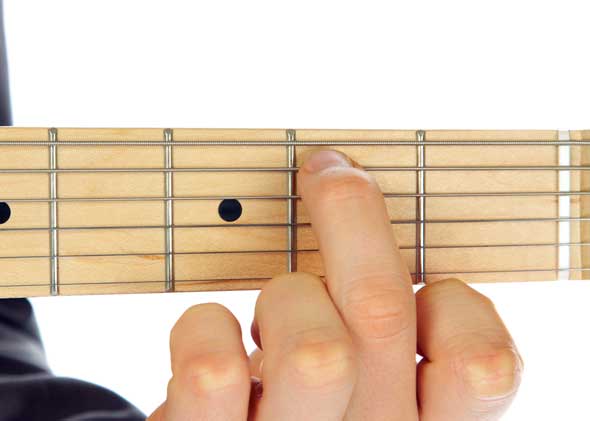
Minor Seventh Chords
Another chord type you will need to know is the minor seventh. The minor seventh chord symbol is m7. Here are the most common open chord shapes for m7 chords.
D Minor Seventh Chord

Dm7

Strum only five strings. Use the first finger to bar across the 1st and 2nd strings at the first fret. The Dm7 chord is easier to play if you position your second finger before positioning your first finger.
Rhythm Pattern

Rhythm Pattern


A Minor Seventh Chord

Am7

Strum all six strings. The Am7 chord shape is an Am chord shape with the third finger lifted off.
Rhythm Pattern



E Minor Seventh Chord

Em7

Strum all six strings. The Em7 chord shape is an Em chord with the third finger lifted off.
Use a pivot finger when changing between Am7 and D7.
Rhythm Pattern


As discussed in Lesson Ten there can be more than one way to play a chord. The following diagrams show commonly used alternative chord shapes for the Em7 and Am7 chords. Certain chord shapes sound better or are easier to play depending on the chord progression.

Em7

This Em7 shape is an Em chord with an additional note played by the fourth finger.

Am7

This Am7 shape is an Am chord with an additional note played by the fourth finger.
Use these alternative shapes in the following chord progression.
Use your first finger as a pivot when changing between Am7 and D7.
Rhythm Pattern



The next chord progression contains a new chord, D6.
D Sixth Chord

D6

Strum only five strings. The chord shape given uses the second and third fingers. You could use your first and second fingers as an alternative fingering.
Rhythm Pattern


G Sixth Chord

G6

The G6 chord shape is like a G chord with the third finger lifted off.
Rhythm Pattern




